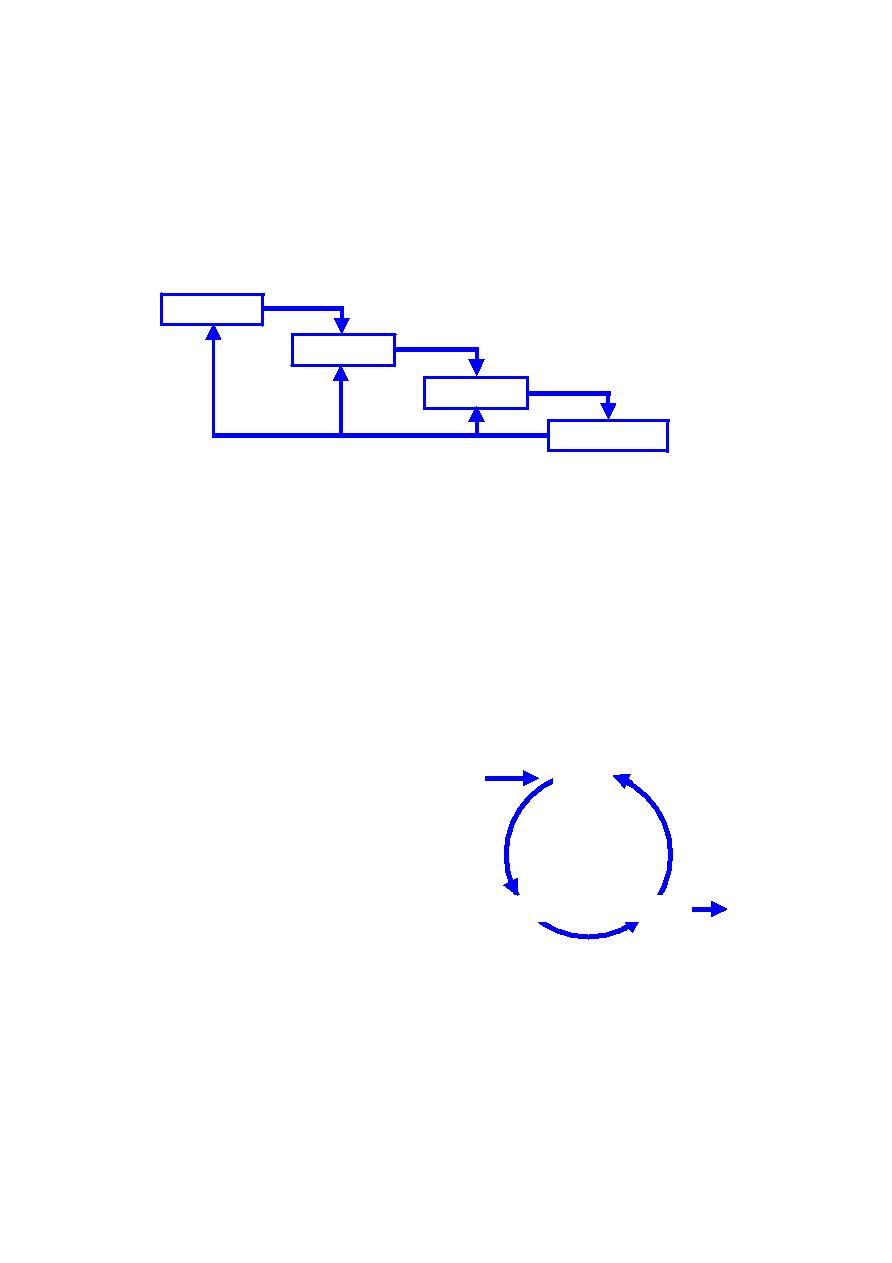
Interactive Waterfall Model
speed. In the modern business world, the chance of your requirements analysis being valid a couple
of months after it has been conducted is very slim indeed.
Waterfall Model, includes a loop as shown below.
loop to the end of the cycle. That is, in order to keep up with changing requirements the "analysis"
phase is revisited at the end of the cycle and the process starts over again.
implementation. The waterfall model implies you have to complete all the steps before you start
the process again. If requirements change during the life of the project the waterfall model requires
the completion of a full cycle before they can be revisited.
alternatives. Some are interesting and many have promise but all have their pitfalls and none have
delivered the quantum improvements they have promised.
process is used to deliver smaller chunks of
functionality in a step-by-step manner. This
reduces the management and overheads in
delivering software and reduces the risk
inherent in the project.
One of the major reasons cited for
software project failure (and a common
sources of defects) is poor quality
requirements. That is a failure to correctly
specify what to build. By delivering small chunks and validating them, the project can self correct
and hopefully converge on the desired outcome. This contrasts with the long lag times in the
waterfall model.
A variation on this theme is "Rapid Applications Development" or RAD.
The phases are similar to waterfall but the 'chunks' are smaller. The emphasis in this model is on
fast iterations through the cycle. Prototypes are designed, developed and evaluated with users,
involving them in the process and correcting the design. The model is particularly suited to
projects in rapidly changing environments where the team needs to adapt to different situations.